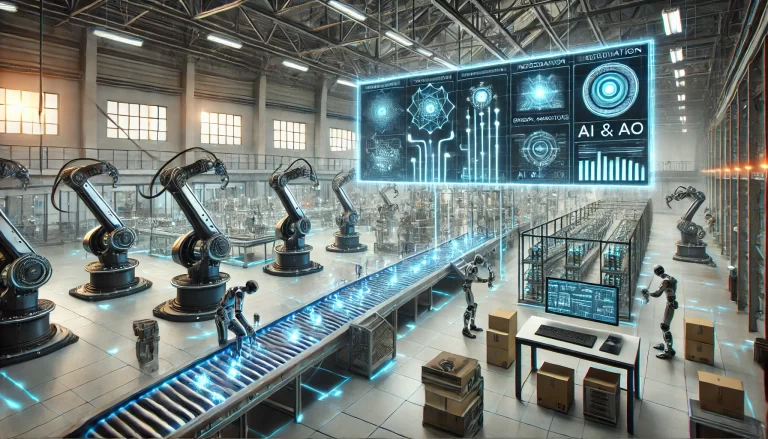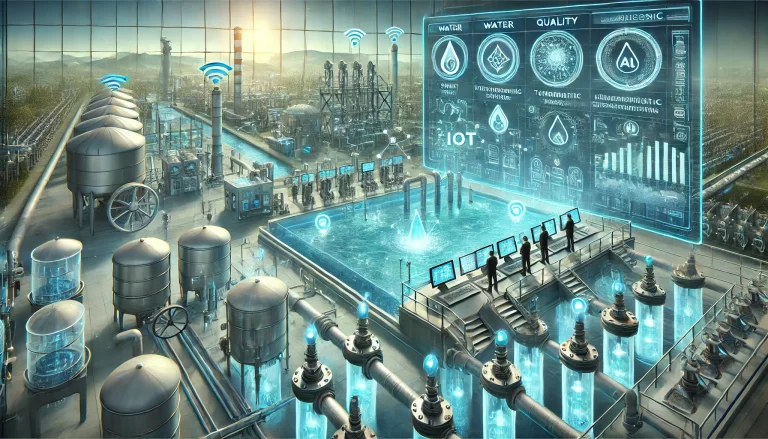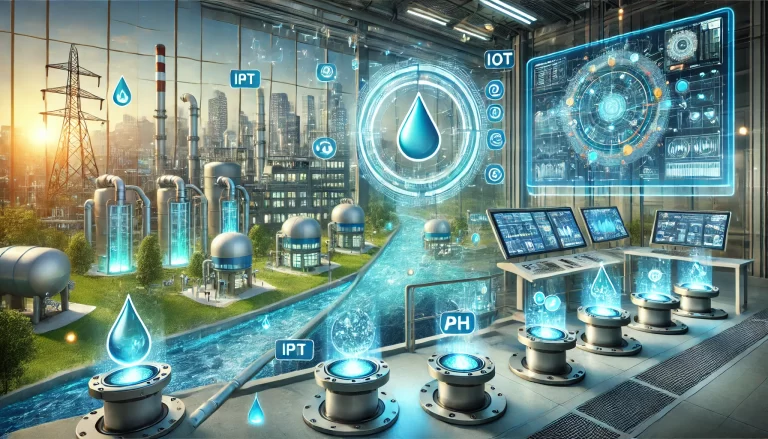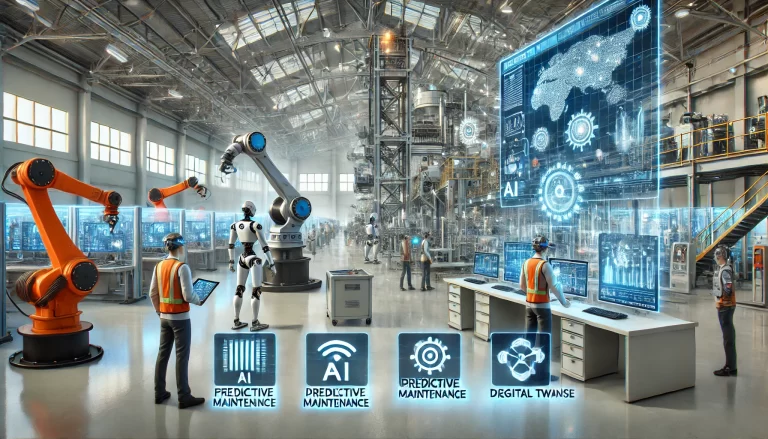From Steam to Intelligence: The Evolution of Industrial Revolutions
The first industrial revolution ushered in the age of steam, freeing humans from reliance on natural forces such as wind, water, and animal power, and enabling mass production.
The second industrial revolution brought about the electric age, where steel giants roared day and night, transforming every facet of human society.
The third industrial revolution marked the information era, where industry became deeply intertwined with data. Beyond high-tech products, humans began to create entire virtual worlds.
Now in the 21st century, if there’s a candidate to ignite the fourth industrial revolution, most would likely vote for artificial intelligence (AI). AI technologies are flourishing across industries—generating reports, articles, designs, presentations, offering decision-making support, industry insights, and even acting as virtual customer service agents. While AI is liberating productivity, it also provokes anxiety about replacement.
Leaving aside the ethical and societal implications for now, let’s focus on AI’s impact on productivity—the essence of its value. As the great leader once said, “Science and technology are the primary productive forces.” In that spirit, let’s explore Industrial AI.

1. Industrial AI Delivers Enormous Value
Industrial environments feature high scalability, which means that even small AI-driven optimizations—such as a 1% improvement in energy efficiency or yield—can generate exponential returns at scale.
According to the World Bank, industry accounts for 28% of global GDP, totaling around $29 trillion (as of 2023). A 1% increase in AI adoption could create a $300 billion value uplift, based on estimates by BCG. Compared to consumer internet monetization, industrial AI enhances total factor productivity, offering more sustainable and counter-cyclical value creation.
Take the steel industry as an example. With AI-driven optimization, reducing production costs by just 10 RMB per ton could save over 100 million RMB annually for a 10-million-ton plant. That’s the power of scale.
Industrial AI essentially enables rapid knowledge retention and replication through digital means. In a traditional plant with complex processes, efficient production demands a vast team: skilled operators, warehouse staff, quality inspectors, maintenance personnel, and process engineers—all overseen by responsive managers. Even with such a team, months are spent tuning process parameters, optimizing equipment OEE, and improving production rhythms before stable output is achieved.
AI can dramatically cut labor and time costs, avoiding risks from human limitations. It acts as a tireless, emotionless expert, monitoring production 24/7 and making precise, data-driven decisions.

2. Industrial AI Adoption Is Gradual and Collaborative
If AI’s capabilities seem daunting, here’s a comforting fact: industrial AI still relies heavily on human collaboration.
Even with AI integration in smart factories, human input remains indispensable. For example, in my experience with industrial software, our free SCADA system recently introduced AI modules for trend forecasting, AI Q&A, and 3D model generation—capabilities that previously cost thousands per project. However, I still need to input the requirements, validate results, and apply them in real engineering tasks.
Here’s a summary of key industrial AI technologies and their real-world applications:
| AI Category | Typical Use Case | Human Role in Application |
|---|---|---|
| Generative AI | New material molecular design | Engineering coordination, parameter input |
| Discriminative AI | Defect detection in precision parts | Model tuning, handling edge cases |
| Reinforcement Learning | Steelmaking process control | Monitoring, business-goal alignment |
| Neuro-symbolic AI | Knowledge digitization | Knowledge curation, personalization |
| Causal AI | Root cause analysis for quality improvement | Logic modeling, corrective planning |
Despite rapid AI development—where top models change monthly (ChatGPT, DeepSeek, Qwen, etc.)—industrial AI’s challenge lies in domain data. Without deep understanding of production processes and rich data reserves, claims of “industrial AI” may be superficial. Many so-called “industrial AI models” are simply rebranded general-purpose models.
True industrial AI requires integration between AI algorithms and sector-specific operational data—this “last mile” may seem close but is the most difficult to achieve.

3. Chinese Companies Are Pioneering Industrial AI
In recent years, Chinese technology companies have accelerated their push into industrial AI. Giants like Huawei, Baidu, and Alibaba Cloud are leveraging their financial and technical strengths to develop machine vision, predictive maintenance, and intelligent scheduling platforms.
In industrial automation, listed companies such as SUPCON (中控技术) are building AI-powered industrial control solutions that empower factories to produce, supervise, and optimize operations independently.
Other vertical players are carving out niches in automotive, semiconductor, energy, and more, forming a diverse competitive landscape. This diversity reflects a fundamental truth: industrial AI must be rooted in deep OT (Operational Technology) knowledge to generate real value in real scenarios.
Types of AI Vendors in Industry (Advantages and Disadvantages)
Let me share why I personally favor SUPCON’s approach to industrial AI, based on three core advantages:
Data Accumulation
Industrial AI requires “genetic material”—high-quality data. SUPCON has accumulated over 100 exabytes of industrial data from decades of experience, allowing its AI systems to deeply model implicit industrial knowledge.Funding Support
Developing industrial AI is capital-intensive. While many automation firms have data, they lack the financial strength for sustained AI R&D. As a top-tier listed firm, SUPCON is well-positioned to fund innovation.Client Profile
Successful deployment of AI often starts with large-scale, well-funded manufacturers—SUPCON’s core clients are exactly that: chemical and petrochemical giants ready to invest in frontier technologies.

4. AI Is a Tool, Not a Threat
Beyond AI, SUPCON has made its full SCADA suite free to users, including modules for data acquisition, configuration, database management, flowcharts, alarms, reports, web/mobile integration, and now AI assistants. As an automation engineer, I deeply appreciate this gesture—it helps lower implementation costs and empowers engineers to benefit from cutting-edge tech.
In conclusion, many fear AI as a disruptive force. But technological revolutions rarely happen overnight. There’s still plenty of room for professionals to learn, adapt, and thrive.
AI isn’t a fully autonomous system—it still needs your expertise to design, guide, and maintain it. That’s the opportunity of our era. I hope more engineers will learn to master AI tools, make work easier, and increase both corporate and personal value.
